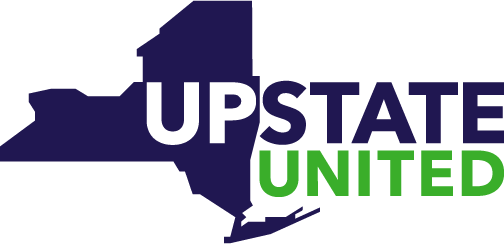Albany Times Union: New coalition to highlight migrants as boon for upstate
December 12th, 2023
Click here to read the full article by Raga Justin.
The Ellis Island Initiative lists among its members major unions and business associations. It hopes to convince local communities that migrants will boost the economy.
The ‘Ellis Island Initiative’ will strive to cast the recent influx of migrants as a boon for industry, coalition organizers told the Times Union. It now lists as participants that include the Business Council of New York and the New York AFL-CIO, as well as various other faith, labor and business groups. The coalition is attempting to highlight how more than 100,000 migrants who have recently arrived in New York City and upstate — as well as the nearly $2 billion the state is projected to spend in aiding those individuals — could bring economic dividends for upstate and rural communities.
In doing so, the initiative points to a readymade source of labor capital, especially at a time when businesses are reporting nearly half-a-million jobs open across the state.
That stance has been taken up by state officials including Gov. Kathy Hochul and members of her administration who have pointed to unfilled jobs in industries such agriculture, hospitality and nursing. Shortages of jobs in those sectors have been acutely felt in upstate New York, according to business groups who are part of the coalition.
The Ellis Island Initiative is not a lobbying entity and organizers said it will attempt to steer clear of highly charged political rhetoric on the issue, instead engaging with local small businesses and community groups to make the economic case for integrating migrant workers.
Members have maintained an emphasis on removing systemic barriers to obtaining work authorization permits and increasing available workforce training programs, both tacks that have been echoed by Hochul’s administration. Many migrants have come to the state seeking work and economic stability, but have found themselves mired in backlogged federal processes to gain work authorization permits.
“We have to figure out a way to make sure that this population is incorporated into our economy. It’s better for all New Yorkers” said Paul Zuber, vice president of the Business Council of New York. “You have jobs being filled, it’ll help businesses continue to operate and expand, you increase the tax base, you get people working who want to be working.”
The coalition also says the migrants represent a large revenue source that could help boost local economies, with both New York City and the state projected to spend heavily to offset their costs for housing, feeding and providing legal aid for hundreds of thousands of newcomers.
Officials with the state Division of Budget have said New York will spend around $2 billion on dealing with the migrant crisis, with a large share of the money for hotel and shelter costs, as well as legal aid and other services to help transition people into residency. That money could be used to enlist and compensate local service providers, coalition members suggested.
Hochul and New York City Mayor Eric Adams have urged increased White House support, particularly in expediting work authorization permits for migrants. In the interim, members of the Ellis Island Initiative want to see workforce training even before migrants have legal work permits, especially to prepare individuals to fill key roles in decimated industries like home health care and other medical sector jobs.
“Many people actually have health care experience,” said Helen Schaub, a vice president with the health care union 1199SEIU. “You might have somebody who’s a nurse — and so we think that identifying those folks even before they have work permits and starting to connect with them can be really valuable.”
Recently, the federal government announced it would expand Temporary Protected Status to migrants from Venezuela, kickstarting work permit authorization for thousands of individuals from that country. But Venezuelans make up only a portion of those in NYC’s overloaded shelter system; it’s unclear how many migrants who have relocated upstate are eligible to take advantage and begin working.
The most recent memos from Hochul’s administration have referenced an estimated 18,000 jobs open to migrants who have recently gained access to work authorization across nearly 400 workplaces.
The coalition’s members also say that migrants represent an important avenue to reversing population decline, which has particularly beset upstate New York cities that have slowly emptied or aged over the past several decades.
“You see these immigrants really changing the trajectory of communities that were definitely stagnating,” said Justin Wilcox, who heads the business advocacy group Upstate United. “This is an unprecedented opportunity, and we really need to make sure policymakers are aware of that. The business community, the faith community, the labor community — we’re all looking at this the same way.”
